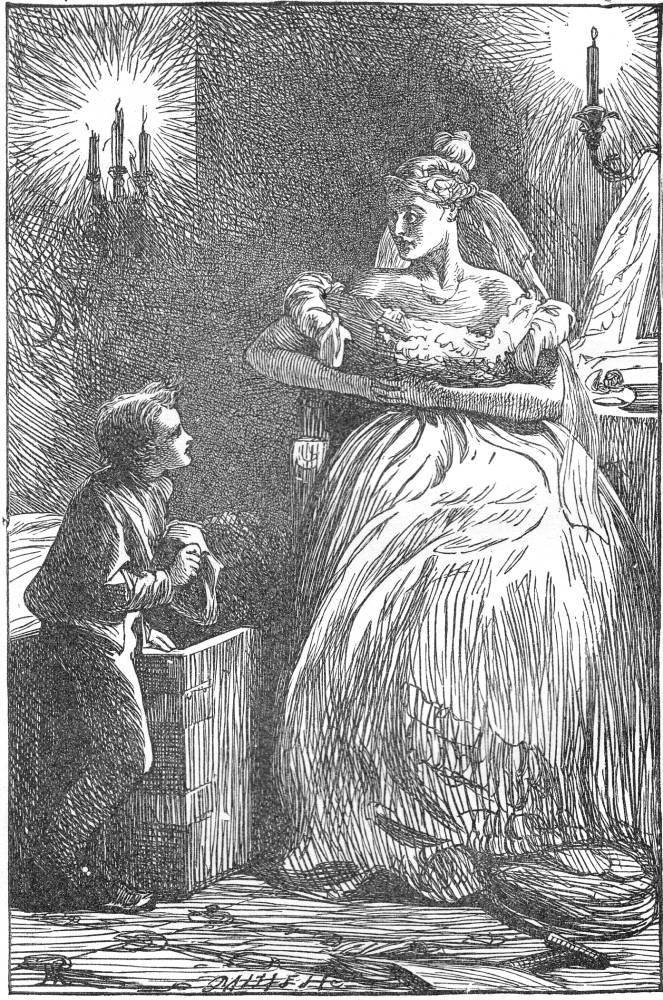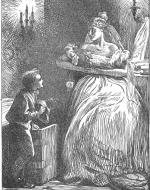Created by Carson Opela on Sun, 10/11/2020 - 22:47
Description:
This is an illustration from the 1862 edition of Great Expectations, one of Dickens' most celebrated novels. The novel reads as a narration from the main character, Pip, as he grows up and advances in society. He begins in life as a poor boy taken in by his older sister and her husband. He then meets a jilted older woman and her adopted daughter, with whom he falls in love. Shortly afterward, he learns that he is to receive installments of money that will allow him to advance his education and become a gentleman. The rest of the novel explores his ascent in society, and the truth behind his society's values and his "great expectations". It is widely considered to be one of Dickens' best and most complete works, and is a true reflection of the time in which it was written. It criticizes the Victorian focus on wealth and materialism, while praising the previous generation's stronger core values. Themes concerning the origin of wealth and the realignment of morals pervade the entire book, and represented in Dickens' mind the society that he grew up in. This novel, like most of his others, achieved great popularity during his time.
Great Expectations was not released with illustrations, the first and only time that Dickens did such a thing. However, illustrations were soon ordered, and Marcus Stone delivered eight woodcuts for the novel. This woodcut represents one of Pip's first meetings with Miss Havisham. In the book she is described as incredibly pale and just skin and bones, however here she is depicted as a beautiful woman.
Works Cited:
LitCharts. “Great Expectations Themes.” LitCharts, 2020, www.litcharts.com/lit/great-expectations/themes.
The Victorian Web. "Pip Waits on Miss Havisham" by Marcus Stone, 8 Jan. 2014, www.victorianweb.org/victorian/art/illustration/mstone/3.html.
Copyright:
Associated Place(s)
Timeline of Events Associated with Great Expectations Illustration
Part of Group:
Featured in Exhibit:
Artist:
- Marcus Stone


